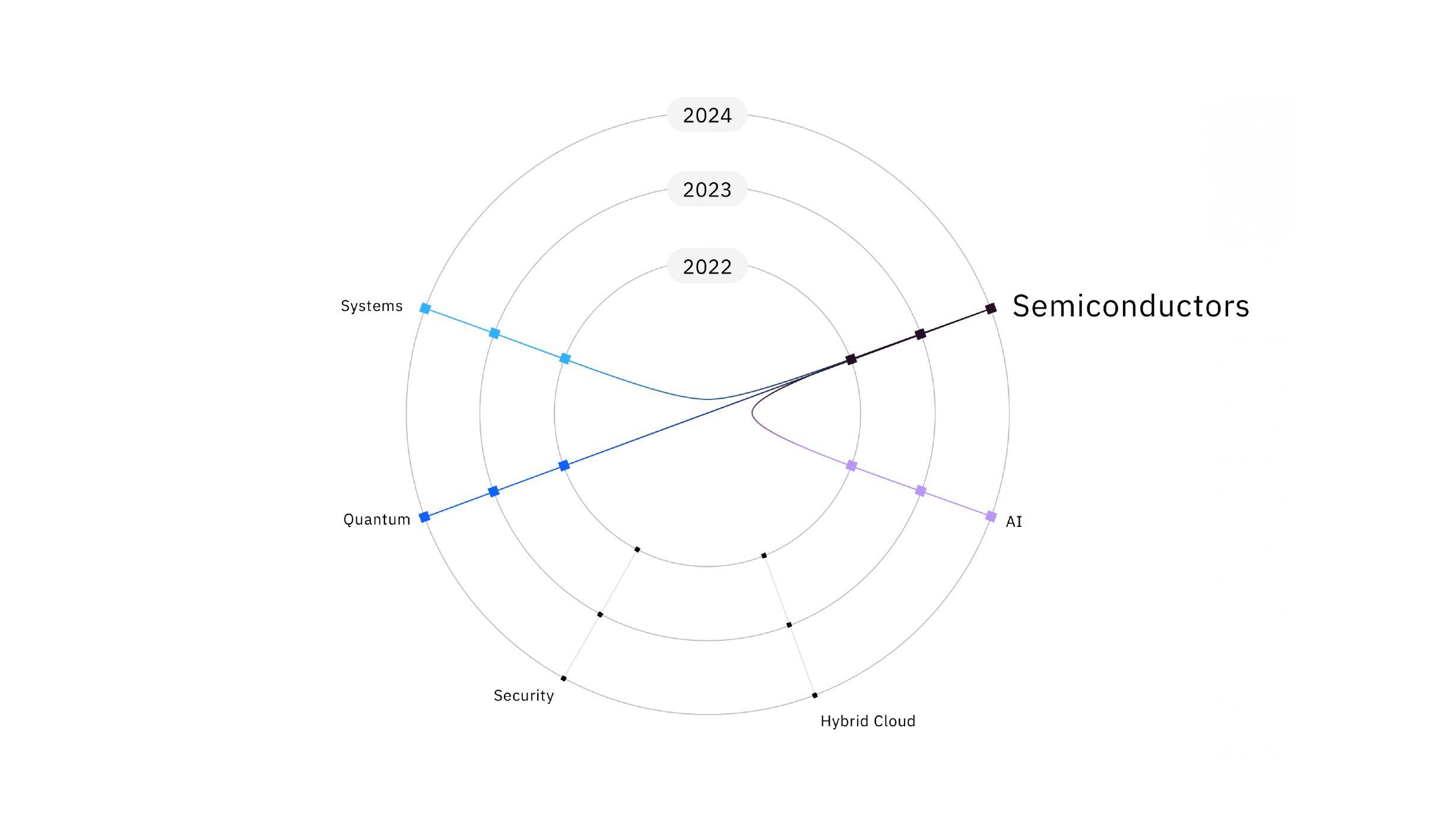Charting the future of technology and tomorrow’s unknown business environments
Introducing the IBM Research Technology Atlas.
As leaders in our industries, we’re tasked with exploring and mapping emerging markets, and how they intersect with new and ever-evolving technologies. We do this with imperfect information, in a world with ever-shifting societal, political, and environmental landscapes.
To successfully navigate anything, you need tools and data, and the map is arguably one of the most important human tools ever made. All great navigators have relied on maps.
Watch this video on YouTube - Mapping the future of technology.}
Maps permeate our physical and digital environments and often connect the two. Maps are excellent tools for guiding us through territory that’s been charted, but there’s a dilemma: How does one map a world that doesn’t yet exist? How do you map the future?
It’s something that we concern ourselves with every day at IBM Research. We constantly strive to invent what’s next for IBM, our partners, and the world. New technologies can be the difference between a competitive advantage in an industry — and getting left behind.
Like all explorers, we too rely on maps to chart our path forward. We first publicly released our roadmap for quantum computing in 2020. It was a signal to the industry indicating our vision for moving from the noisy, small-scale devices of today to devices with thousands of qubits in the future. We believe these systems will enable quantum computers to solve hard scientific and business problems that would be impossible on classical machines.
Our quantum roadmap has been an incredible success and in just two years we see the path clearer than ever. We released our latest quantum chip, the 127-qubit chip Eagle, late last year, and as we showed in our roadmap, we’re on track to unveil our next chip, Osprey, with 433 qubits, later this year.
The roadmap we’ve built in quantum is part of a larger culture we have at IBM Research around technology roadmaps. They help guide the rapid commercialization of our R&D – creating entirely new industries, redefining existing ones, and ultimately helping us map the future of technology.
We understand that the future of technology isn’t found in any single roadmap – it’s found at the intersections of many convergent paths. So, we’ve combined six technology roadmaps into a new navigation tool: The IBM Research Technology Atlas. It includes significant updates to our quantum roadmap, outlining our plans for building modular quantum systems and devices with more than 4,000 qubits. It also includes our roadmaps for AI, systems, security, semiconductors, and hybrid cloud. This is the first time we’ve shared these roadmaps publicly.
The Atlas illustrates detailed plans for the next three years of research, and what we need to do to achieve our goals. It shows how our work across technologies is intersecting. Each roadmap dives into our strategic goals and explains why they matter, what will enable them, and even what infrastructure will power them. It projects into the near future in realistic detail so our partners and clients can clearly see how these technologies will be evolving.
The future of everything
For each area of research, there is much hard work that needs to be done, but we believe there to be the potential for transformative advances in the next three years. In artificial intelligence, we expect to facilitate frictionless development, deployment, and scale of foundation models for enterprise uses. Foundation models have recently emerged as an extremely promising tool for creating efficient, flexible, and reusable models for AI.
In semiconductors, we’re aiming to create innovative transistor, interconnect, and power distribution network elements for novel chip designs that will help power the technology of tomorrow.
These are just some of the goals we’ve set ourselves on our roadmaps, and where our areas of focus interconnect, we see the potential for some truly revolutionary outcomes. The combination of our research in AI and hybrid cloud will allow enterprises to build and run foundation models over a hybrid-cloud platform to help make developers and data scientists more productive. AI will drive efficiencies in enterprises’ reliability and operations, and foundation models will accelerate software development, from finding security vulnerabilities to automatically translating code between languages. Our research into security will help keep the next generation of enterprise systems running in the cloud safe and secure.
A convergence of our research in hybrid cloud, quantum computing, and systems will put us on a path to quantum advantage, where we can solve problems that are intractable today. A frictionless development experience with hybrid cloud tools that combine quantum and classical computing into a serverless environment will make developing and deploying applications simpler, faster, and more flexible. We will also need higher-quality quantum circuits, a feat that will only be possible by bringing quantum and classical systems together to implement error mitigation and error correction.
The interconnections across our roadmaps chart a path forward that can help navigate the future of technology.
I invite you to explore our IBM Research Technology Atlas to see our vision for what’s next, and how we can co-create roadmaps with our partners to solve your biggest problems in the years to come.
Related posts
- NewsPeter Hess
IBM Storage Scale delivers real-world performance: an in-depth analysis
Technical noteBrian Belgodere, Chris Miller, John Lewars, Matthew Klos, Yukio Hayashi Leon, Mara Miranda Bautista, and Olaf WeiserReimagining storage for the generative AI era
ResearchTalia Gershon, Mike Murphy, Swaminathan Sundararaman, Haris Pozidis, and Khanh NgoIBM and UIUC develop an orchestration system to serve LLMs more efficiently
Technical noteArchit Patke, Saurabh Jha, and Chandra Narayanaswami
